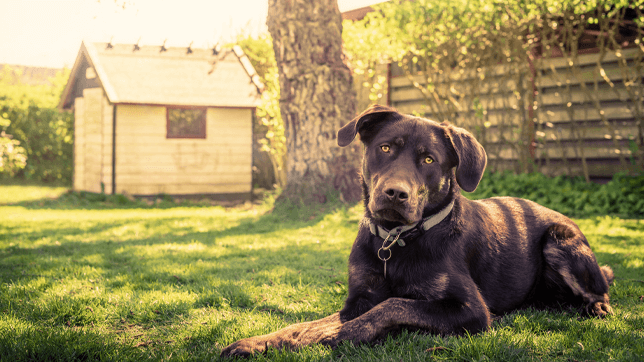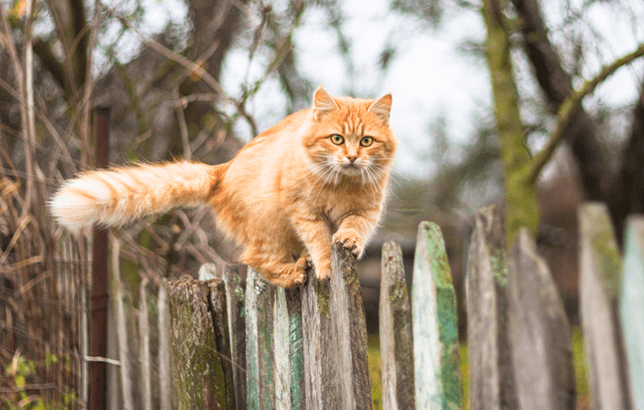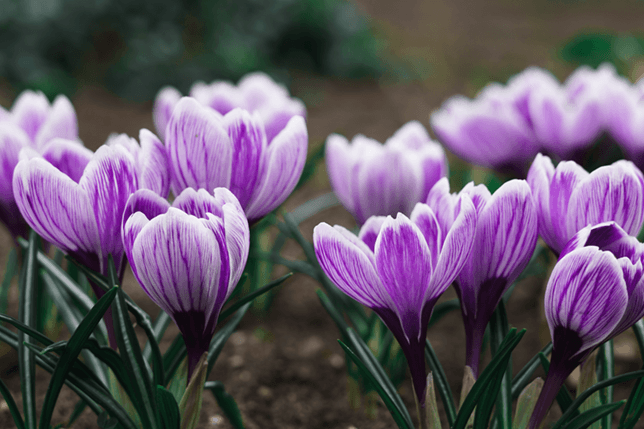10th March 2022
Keeping your pets safe in the garden this summer

It’s summer! This probably means you might be spending more time in the garden, cat and dog in tow and, of course, you want to keep them safe in it which means pet-proofing your garden!
You might have already done this and it just needs a few extra touches, or you’ve welcomed a new member to your family and need to start from scratch. Whichever it is – we’re here to help.
Here are some tips and tricks to pet-proof your garden ready for the relaxing summer weeks with your pets.
Fencing
If you have fencing make sure it’s secure, if you don’t have fencing, get some! You’ll need to make sure the fence is tall enough to stop your dog from jumping over it and escaping. You should also make sure the fence goes deep enough so that your dog isn’t able to dig under it and get out. The same applies to garden gates, you’ll need to make sure your dog isn’t able to jump over it and that the gap between the floor and the gate is too small for them to squeeze through. Honestly, they’re like hairy Houdinis!
Ensuring your dog can’t escape is just so important for their own safety as well as those of others. Our data shows that the average cost of veterinary care following a road traffic accident involving a dog in 2017 was £1400.17. That’s a hefty bill, and might easily be avoided.

With cats it’s slightly different unless they stay indoors. No fence or gate will keep them in your garden. Outdoor cats are free spirits and would probably hate being deprived of their evening roam. Unfortunately, there’s no way you can keep them safe while they’re out and about, which is hard to accept and those calls at the door in the morning can be quite a relief, even if the sun’s not quite risen yet.
Sometimes, unfortunately, cats too can get into scrapes which can also be expensive as well as upsetting for all involved. The average vet bill following a road traffic involving a cat in 2017 was £1,311.13! Just make sure your cat is microchipped, so if the worst was to happen you’ll know sooner rather than later.
Flowers and plants
Make sure you pick non-toxic flowers, plants and vegetables to fill your garden. This is so important as you want to be able to let your pets out into without having to supervise them, and don’t want them to fall ill if they accidentally nibble the wrong thing. In 2017, the average cost to treat poisoning in a dog was £571.70, and £691.75 for cats.
You can always discuss the best flowers to pick or avoid at your local garden centre where they’ll be able to advise you on what’s safe or dangerous. This way you’re able to avert any emergencies from your pet eating any poisonous flowers or bulbs.

Fertiliser
Always ensure the fertiliser you pick is pet-friendly and not toxic. You can play it safe with manure (they might want to roll in it though), compost and seaweed but will want to avoid ones containing the following
- cocoa bean mulch
- bone and blood meal
- fish meal
as these are toxic. It usually states on the packaging if it’s pet-friendly so you can keep your best friend safe and sound even with a beautiful blooming garden. The same applies to slug pellets and weed killer. Make sure they’re safe to use around your cat or dog as you don’t want to be stuck with a hefty bill and a sick pet!
Shelter
If your cat or dog is likely to want to stay outdoors in the sunshine make sure you provide them with shelter, away from the rays. The shade will keep them a lot cooler than direct sunlight and it’s important to make sure they don’t overheat. Freshwater is also a must, always keep an eye on their bowls as they may surprise you. My dog especially likes to flip the bowl and roll in the water but will ignore his doggy paddling pool. Dogs, eh?
Oak processionary moth (OPM) caterpillars
If you have an oak tree in your garden or maybe at your favourite dog walking spot, you need to be aware of oak processionary moth (OPM) caterpillars. These caterpillars often cluster together and build white, silk-like nests in the branches or trunks of oak trees and they’re dangerous.
The hairs on oak processionary moths caterpillars contain an irritating substance called thaumetopoein, which means they’re a risk to humans and their pets! Each caterpillar has about 62,000 hairs, which they can eject when they feel threatened.
While the hairs can be carried in the wind, it’s important to keep your pet away from the base of an oak tree to avoid getting the hairs in their nose, mouth or paws.
If your dog or cat has come into contact with an OPM caterpillar or their nest while out and about, you might notice the following symptoms:
- Excessive drooling
- Swollen tongue
- An inflamed or swollen mouth, throat or stomach
- Difficulty breathing or gagging
- Vomiting
- Scratching their muzzle
If your pet is suffering with any of the above symptoms, call your vet for advice.
Do not try to remove the cluster of caterpillars yourself, always report the sighting of a nest or caterpillar to the Forestry Commission.
Stay safe this summer!
Looking for more dog advice?
Find the information you need as we support you through every step of your journey with your canine companion.
Need dog insurance?
Dog insurance can help cover the cost of veterinary treatment if your dog gets injured or falls ill.
We know pets
Our pets are part of the family. To achieve our vision of a better future for pets everywhere, we work with our partners, vets, and other veterinary professionals who are pioneering the latest advancements in animal care. Our campaigns, articles, and events are crafted to support, educate, and celebrate pet owners, while our policies are designed to provide peace of mind at an affordable price.
Yet our policies don’t just protect against the unexpected – they have purpose, too.
Since we were founded over 25 years ago, we've provided industry-leading policies that protect the nation’s pets, while also making a difference to animal welfare and our planet. Thanks to you, our policyholders, we've donated over £9 million to more than 830 animal welfare charities and conservancies, helping to support vulnerable pets and wildlife around the world.
We’re proud to be wildly different. Are you?
